“Bright and airy” is probably the most overused term in home decor this century, but there’s no denying that light-coloured walls are beneficial to a small space. Still, they aren’t your only option when it comes to home design. No matter how big (or small) your space is, incorporating darker, more saturated hues into your home’s design is a sure way to add personality and bold character to the mix – when it’s done right. From using colour to make a room feel larger to the best paint finishes for more-pigmented colours, I’ve rounded up 18 stylish ways to showcase dark colours in your small-space design.
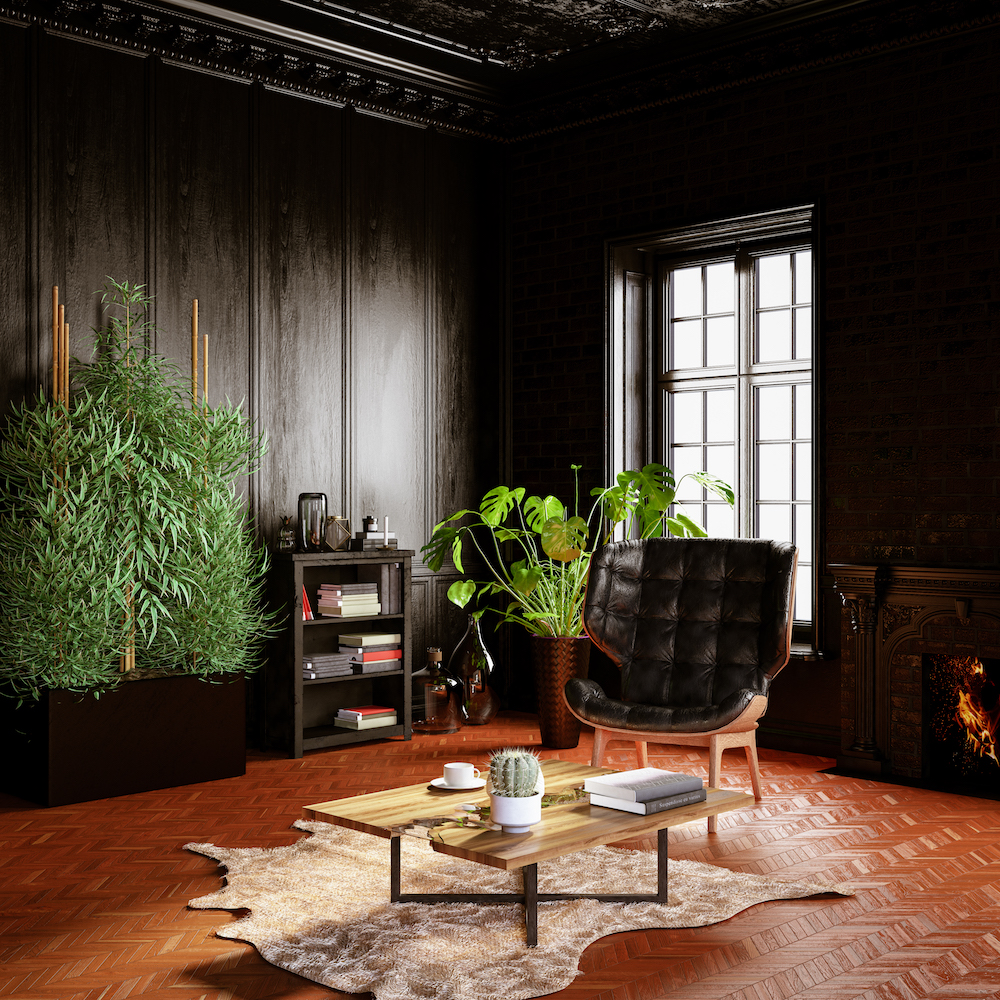
All Out
If you want a room to look a little larger than it is, create a bit of an optical illusion by painting everything – the walls, the trim and even the ceiling – the exact same colour. This will visually blend the lines of the room together and unify the space for a bold (and bigger) appearance.
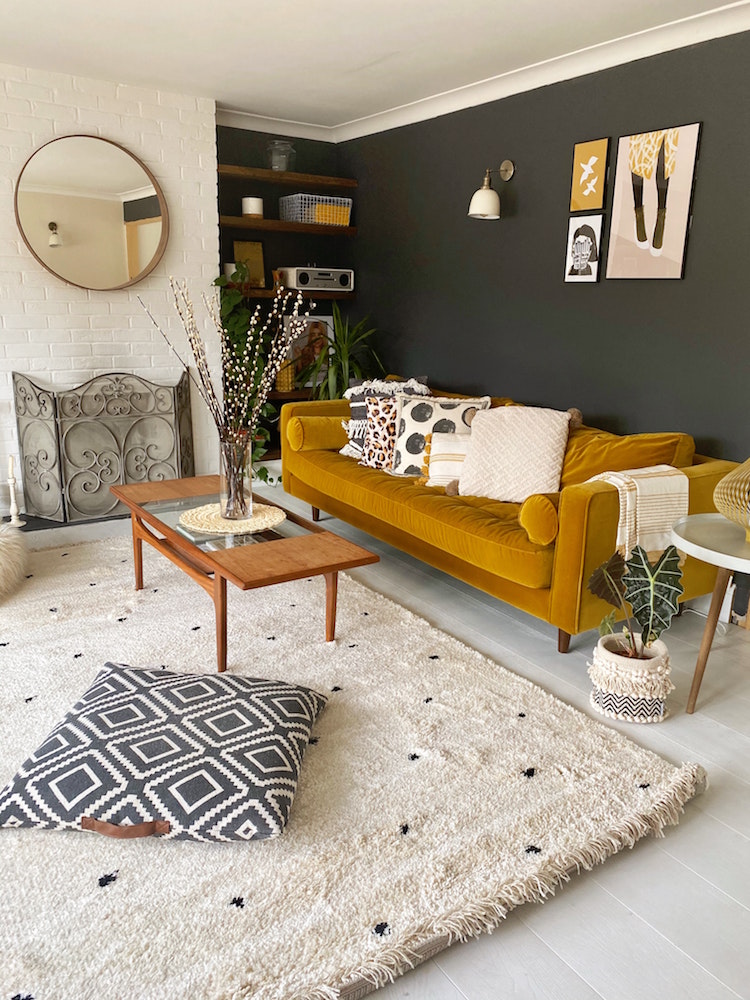
Be Selective
With that said, going floor-to-ceiling dark isn’t the only way to trick the eye into seeing more space. In a rectangular-shaped room, try painting the longest wall in a deep shade while keeping the shorter walls light for an elongating effect.
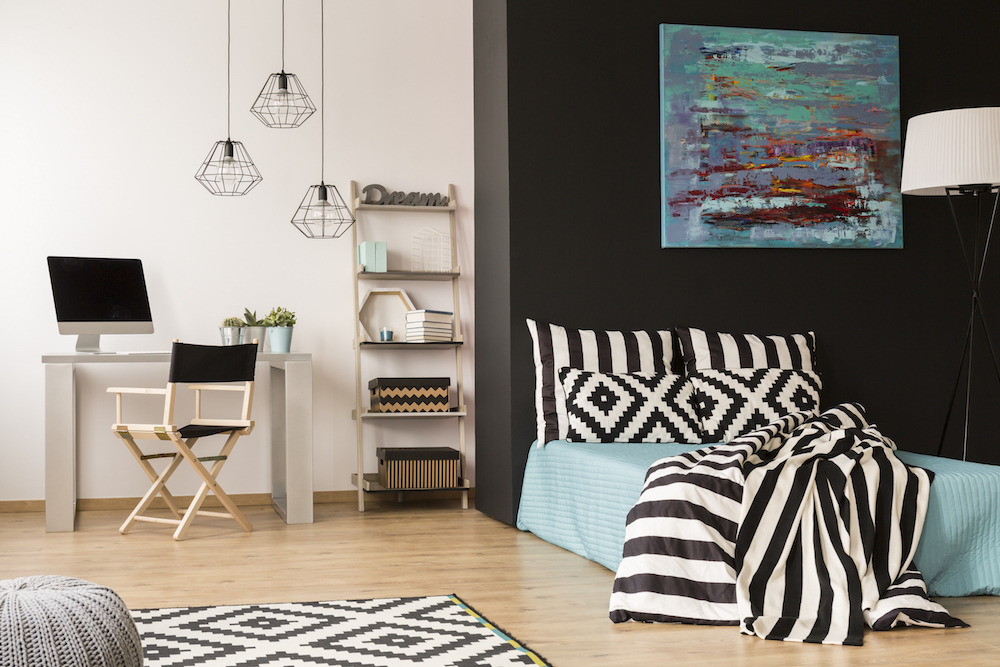
Divided Spaces
Open-concept living has its downsides
, but dark colours can help when you style them right. If you want to create a distinct sense of space within an open floor plan, dark-hued paint can work to define an area – especially when applied as colour blocking.
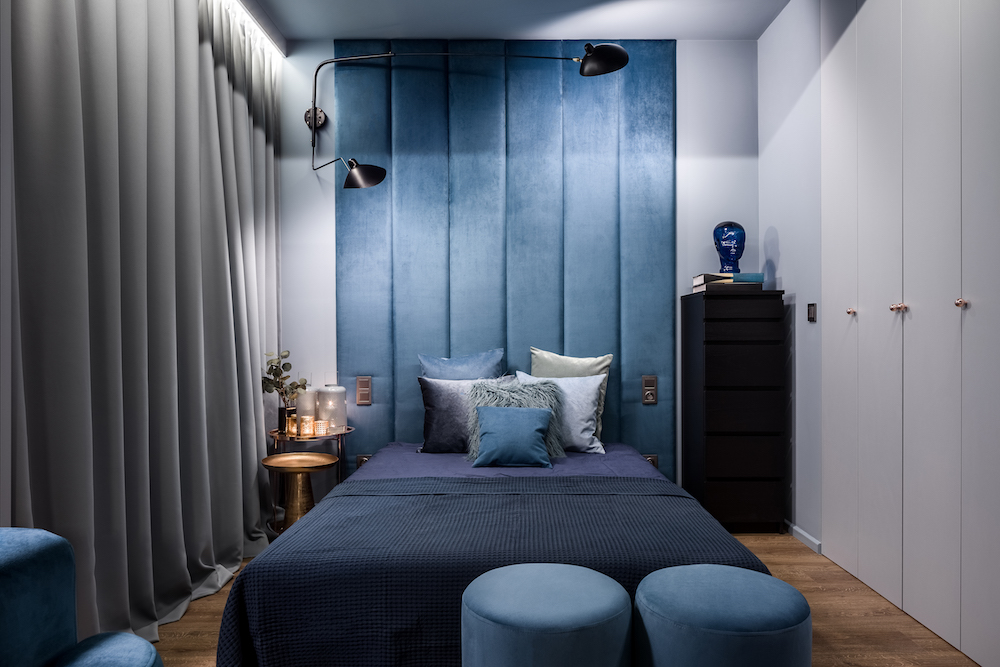
Monochromatic Moments
Using a few different shades – both light and dark – of the same colour (like a pale blue, royal blue and navy blue) in your design makes for a sophisticated, monochromatic look that brings out a cozy feel in a small space.

Half and Half
Another way to use deeper colours to your advantage in a smaller space is to colour-block the room for a visual impact. In this multi-functional garage living space that Sarah and I created we used a rich charcoal colour on the lower half of the walls, with a light neutral shade on the upper walls and ceiling. The result was a small space that packed in a lot of function without feeling too heavy.
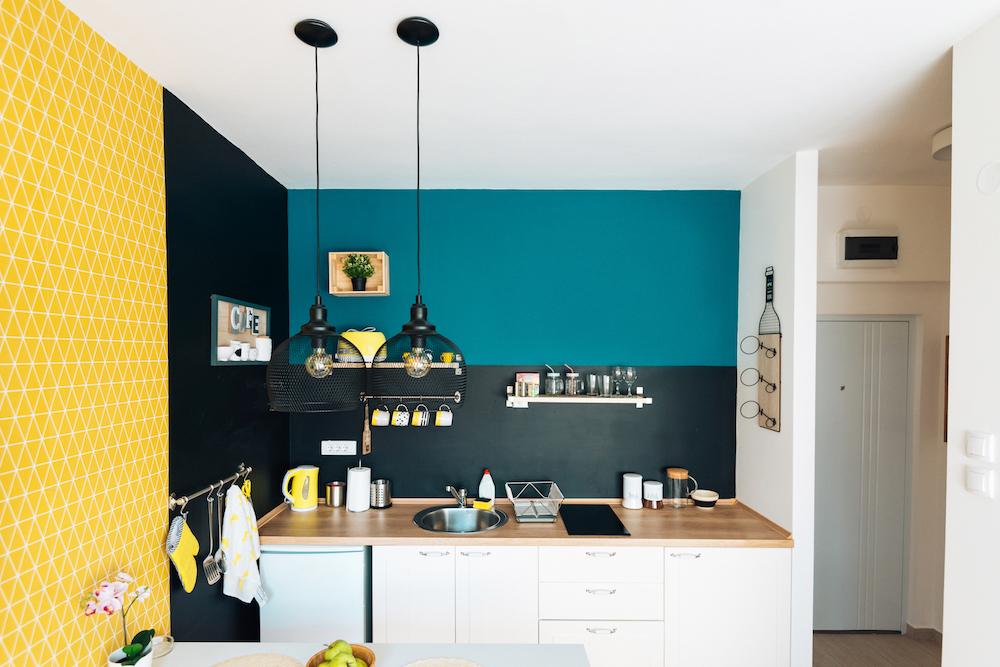
The Bright Balance
Dark colours can also have a grounding effect on super-vibrant shades that might otherwise overpower a smaller space. Finding this balance between bright accents and a darker foundation is especially important if you’re dealing with a small space, like this petite kitchen.
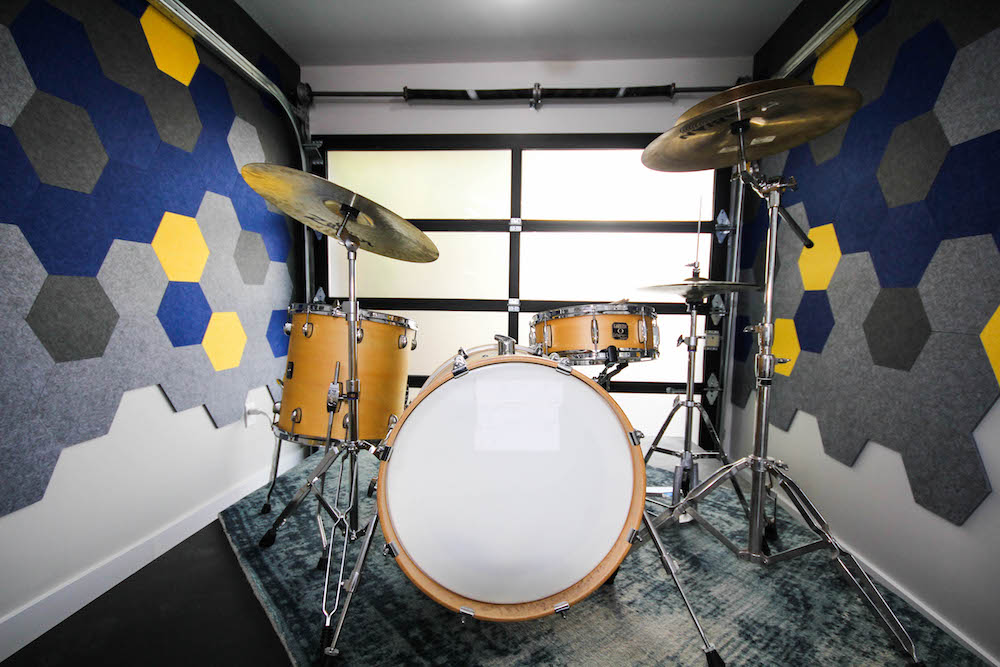
Part of a Pattern
Similarly, using a mix of dark and bright colours in a feature wall gives texture and depth to even the smallest spaces (like the fun patterned soundproofing walls Sarah and I created for this small, but mighty music area for Backyard Builds).
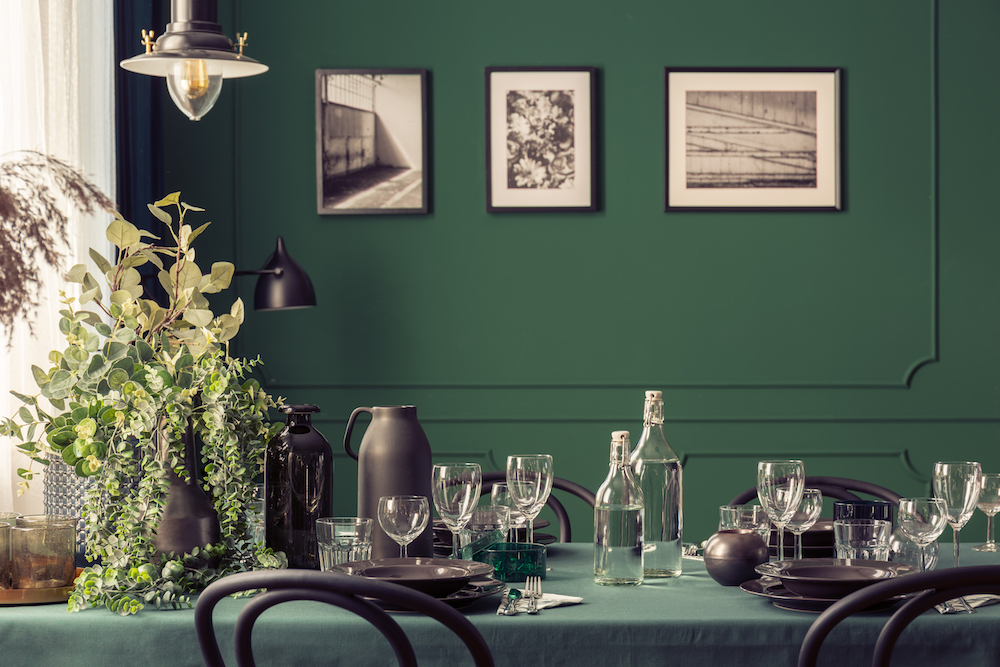
Matte Matters
When you’re playing with dark colours in your home design, the shine factor (AKA the type of paint finish you use) is another important consideration. If you’re using a dark-hued paint on the walls, you might want to avoid glossy-finish paints. Instead, an eggshell or matte finish is a great way to soften the look of a dark room – particularly in a smaller space.
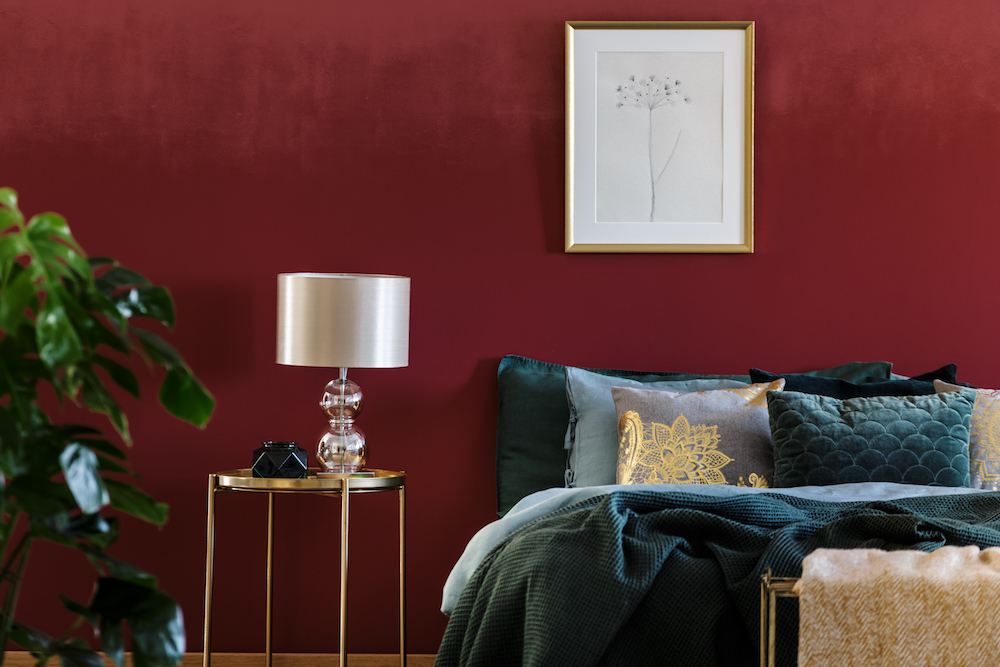
No Natural Light, No Problem
This might seem counterintuitive, but rooms that lack natural light tend to look smaller if they’re painted in a lighter colour. Instead, experiment with a rich, dark paint colour in low-natural-light rooms for a more luxurious, cozy feel.
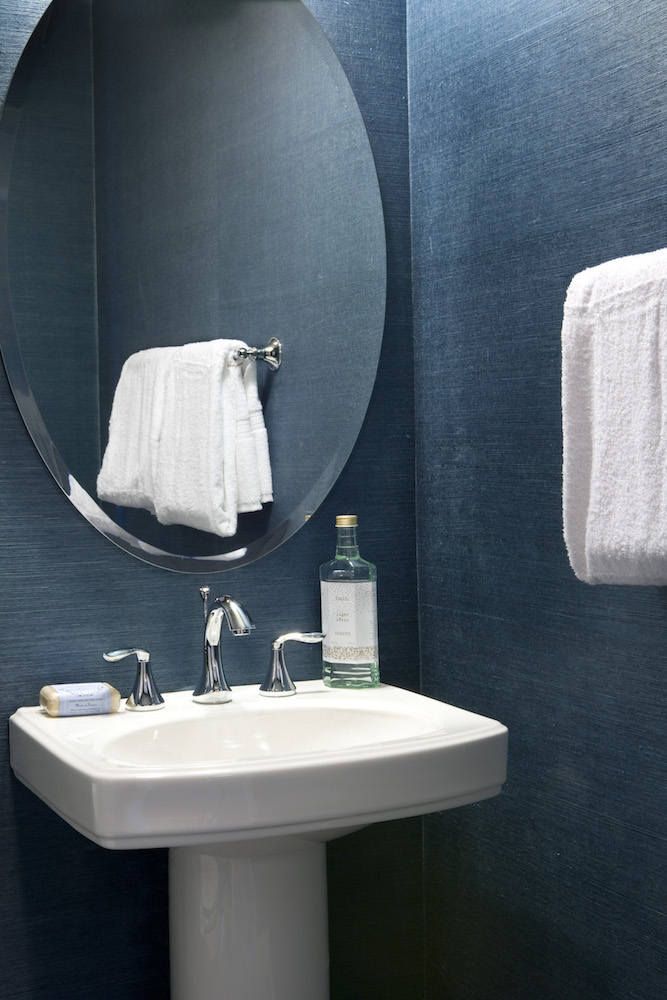
Bathroom Blues
Many small bathrooms and powder rooms are windowless, which actually makes them prime candidates for using a deeply pigmented colour on the walls. In small-space rooms like bathrooms, dark colours can create a roomier feel.
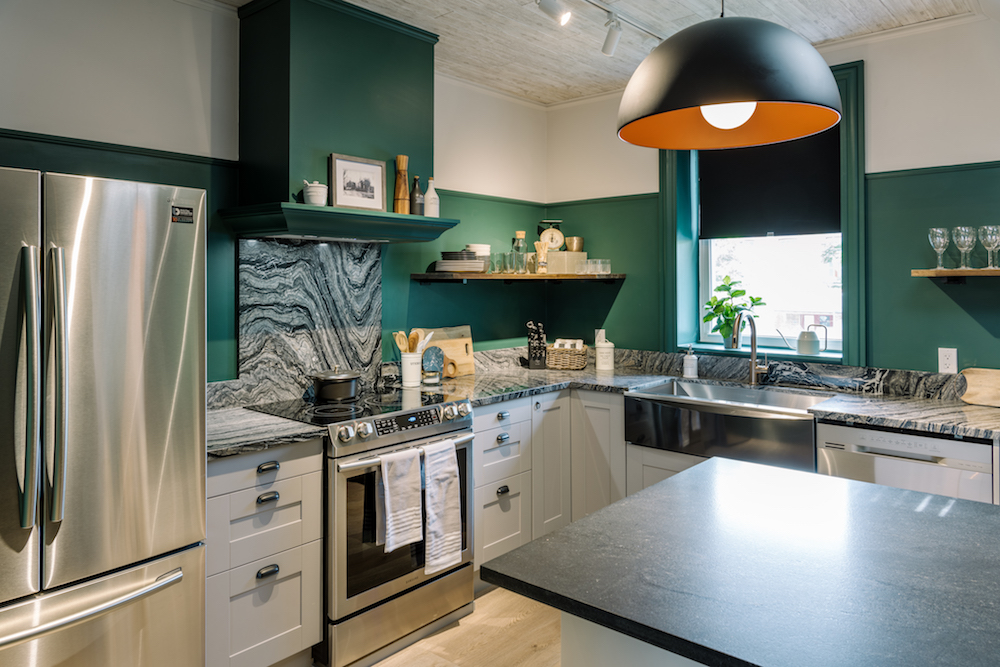
A Character-Rich Kitchen
White kitchens are an ever-popular trend because they convey a clean look, but they can also verge on ho-hum if you’re not careful. Updating a small kitchen with a rich jewel-toned colour on the walls gives the room a touch of drama and personality.

Office Space
One of the secrets to successfully working from home is to set up an inspiring workspace that makes you feel like a boss. Painting the walls in a dark shade (like an inky black or forest green) brings instant sophistication and confident vibes to your office (check out some of the home offices of these celebrities to see what I mean).

Blend in the Built-Ins
Whether you want a library in the living room or you need a lot of storage, built-in shelf units can be super useful – but they take up a lot of space. One trick to make shelves and built-in units look less obtrusive is to paint the shelves and the surrounding wall the same colour. Do this with a deeply pigmented colour for a sophisticated feel.
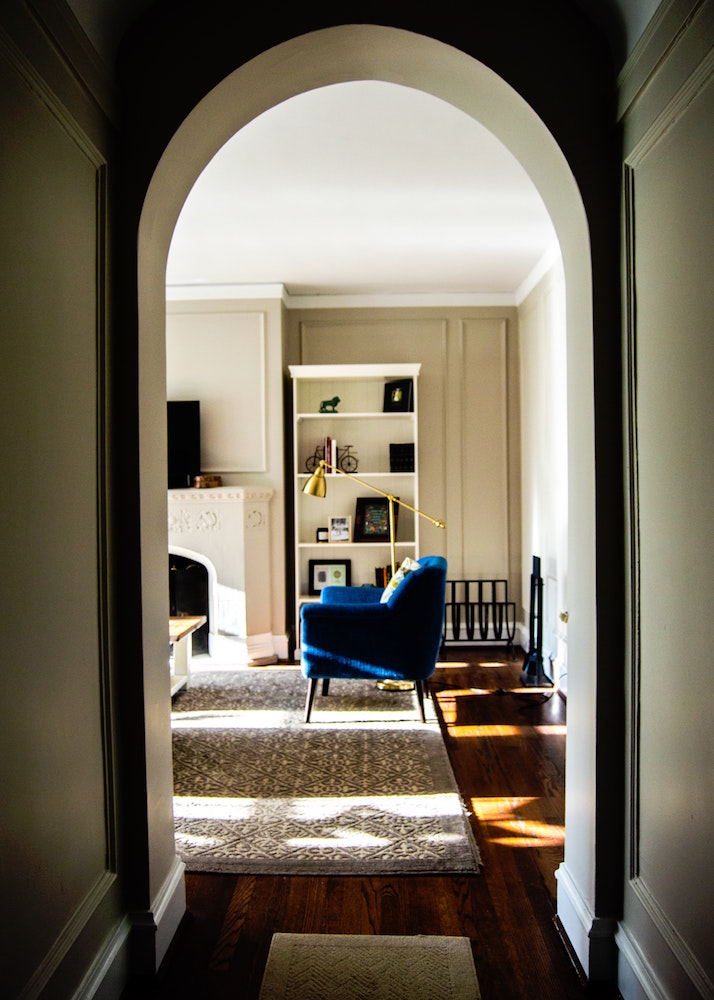
Archway Emphasis
Rich, darker hues are also a stylish way to bring subtle definition to smaller architecture features in your home, like a curved arch in the hallway.
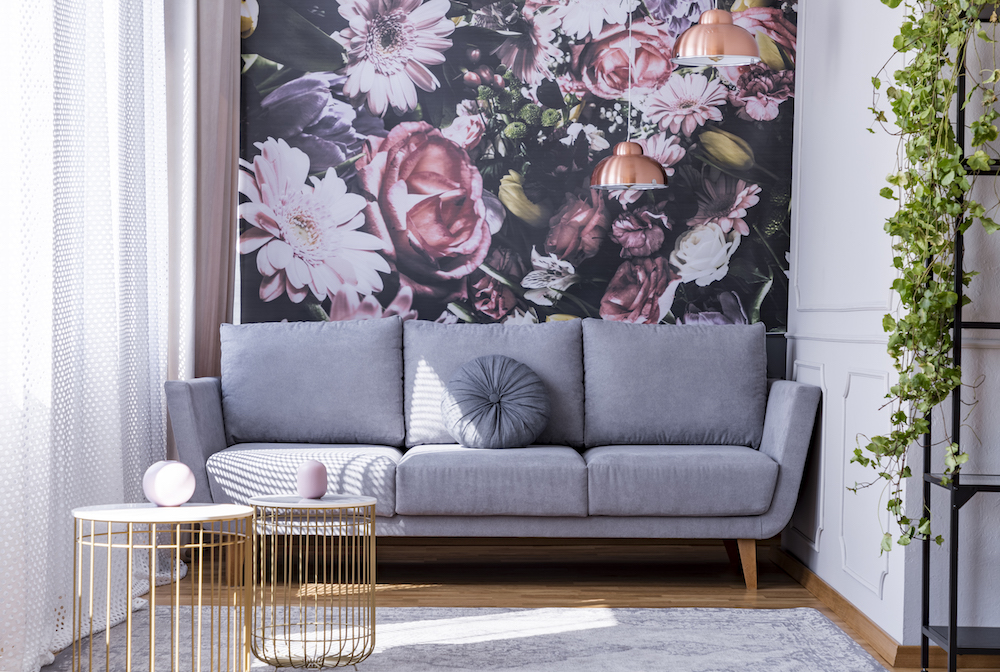
A (Delightfully) Dark Nook
Awkward angles and nooks can be frustrating when decorating a small space, but that doesn’t mean they should be neglected. If you have a light, bright room, why not embrace the alcoves or nooks by using dark colours to make them stand out and create contrast? Creating a deep accent wall or using a moody-hued wallpaper in a nook delivers unexpected dimension.
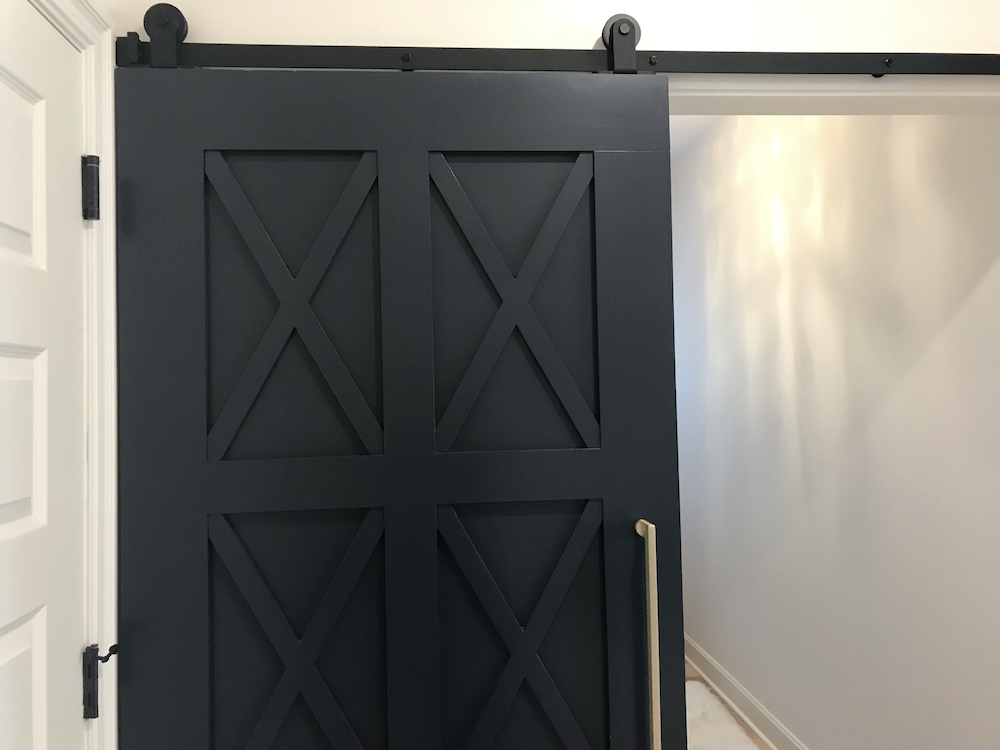
Dark Doors
When designing a room, open the door to paint possibilities that go beyond the walls – like the doors. Just as painting entry doors refreshes a home’s exterior, painting interior doors dark gives them a more substantial feel. It’s a quick-and-easy way to update the whole room with a deep hue.
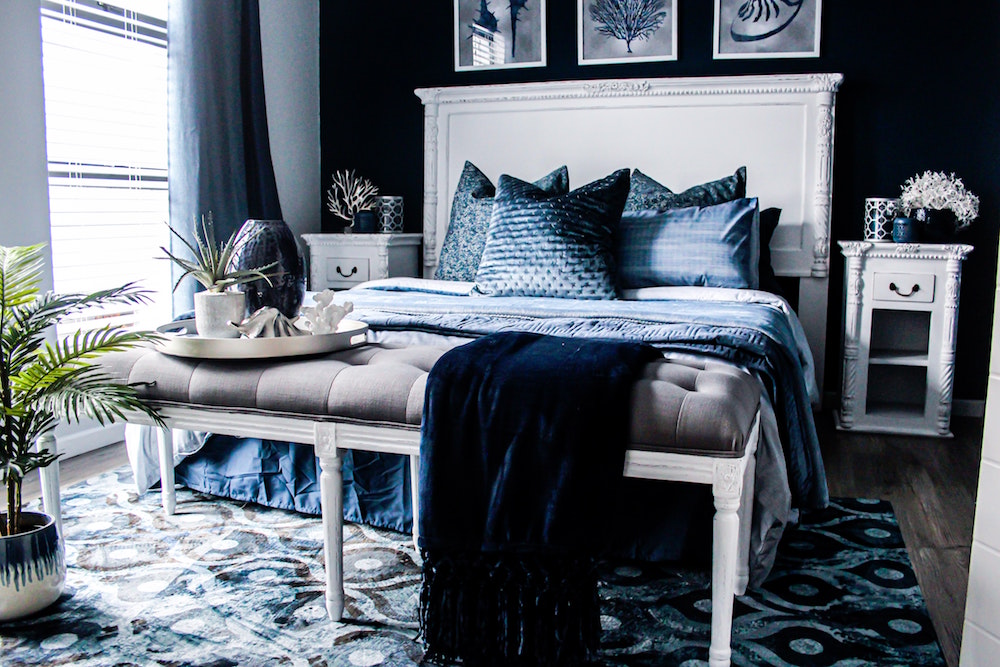
A Study in Contrasts
Of course, just because you use a deeply pigmented colour on your walls doesn’t mean that you have to go totally dark. If you use dusky colours on the walls in a small bedroom, for example, consider using bright furniture to craft stylish dimension.
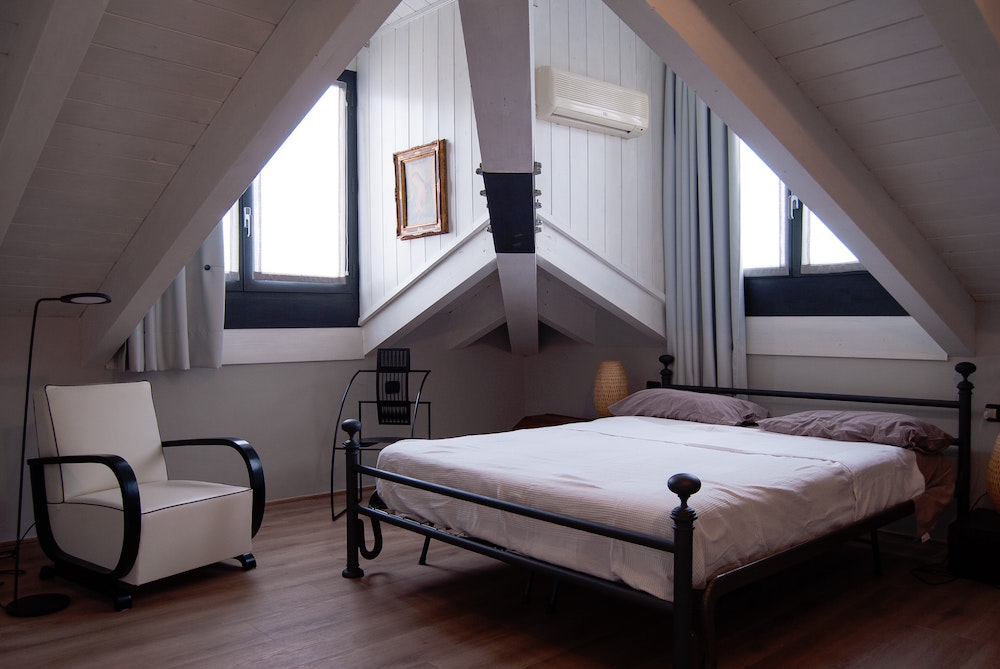
Accents Only
Finally, if you’re still not sold on using dark colours on your walls in a smaller space, you might want to focus on using deep-hued details to create elegant contrast. In this tight attic space, the walls are white, but all the accents (like the lighting, furniture bases and window frames) are distinctively dark for the best of both worlds.
Home Network your inbox.
By clicking "SIGN UP” you agree to receive emails from Home Network and accept Corus' Terms of Use and Corus' Privacy Policy.




